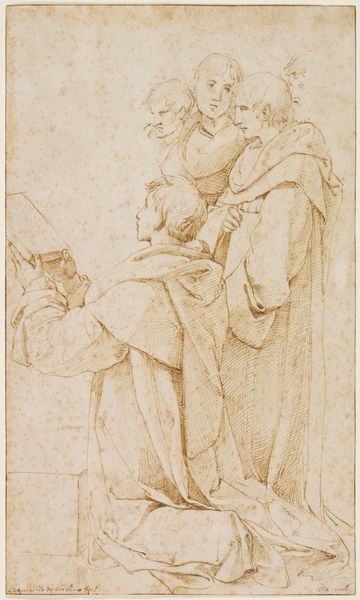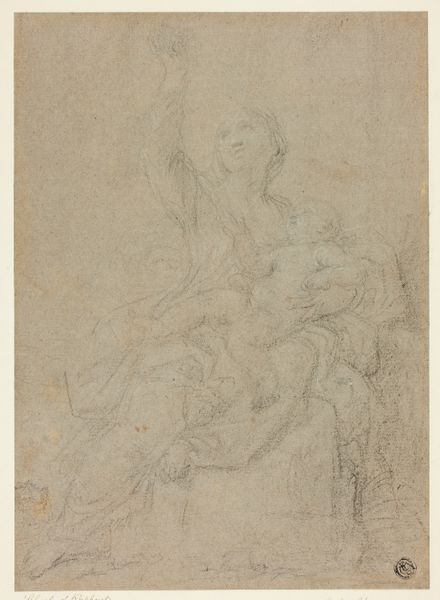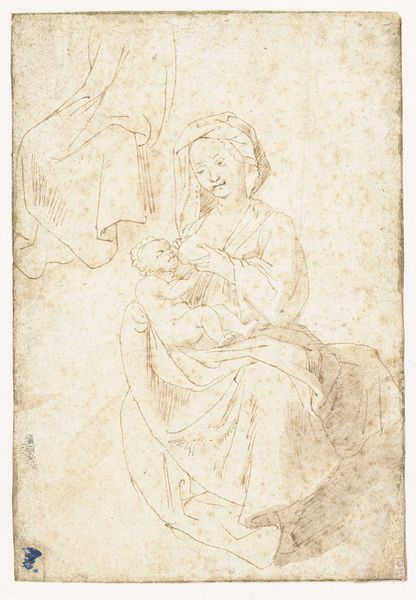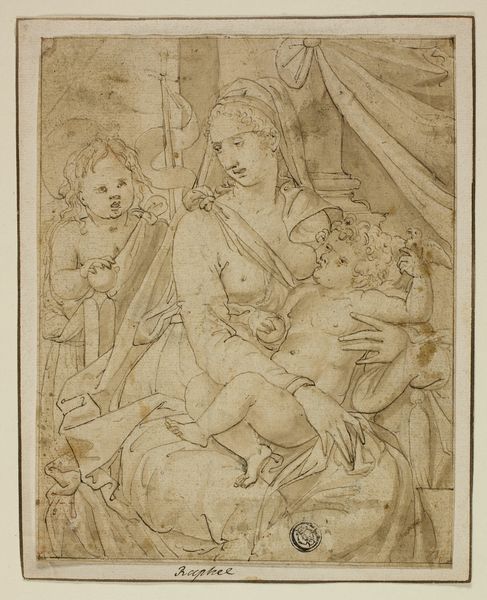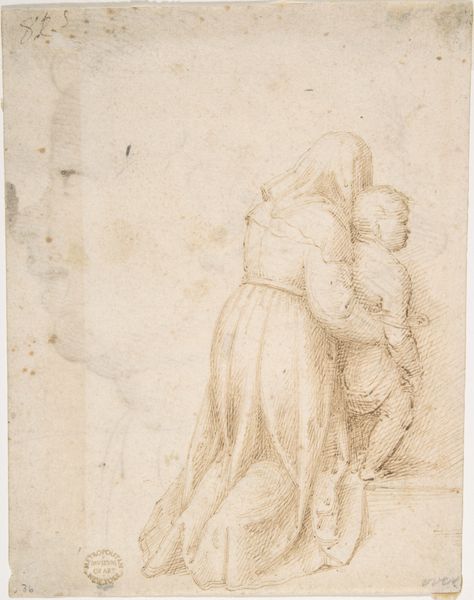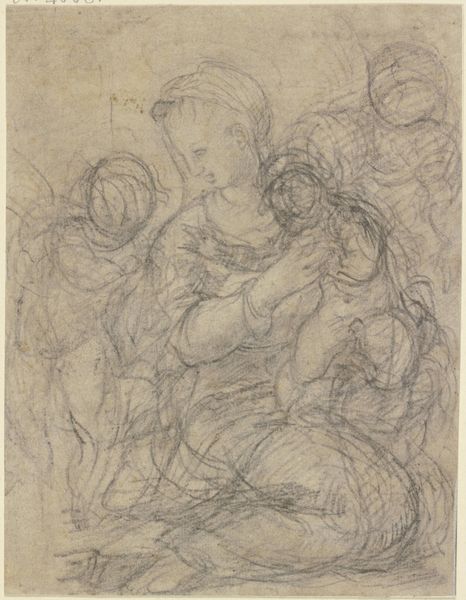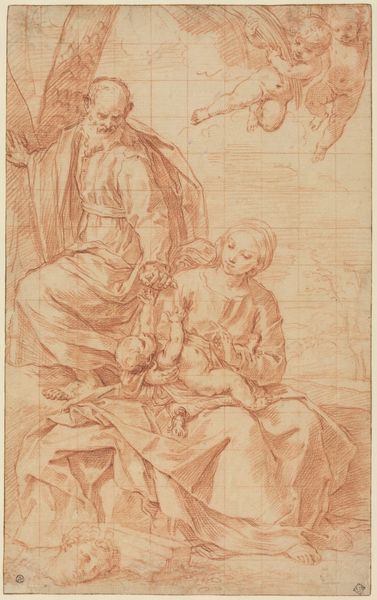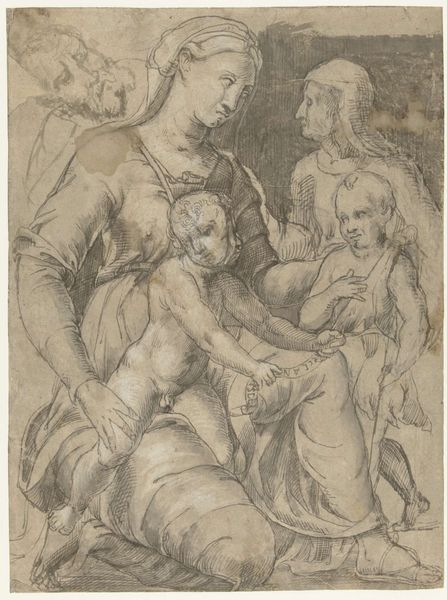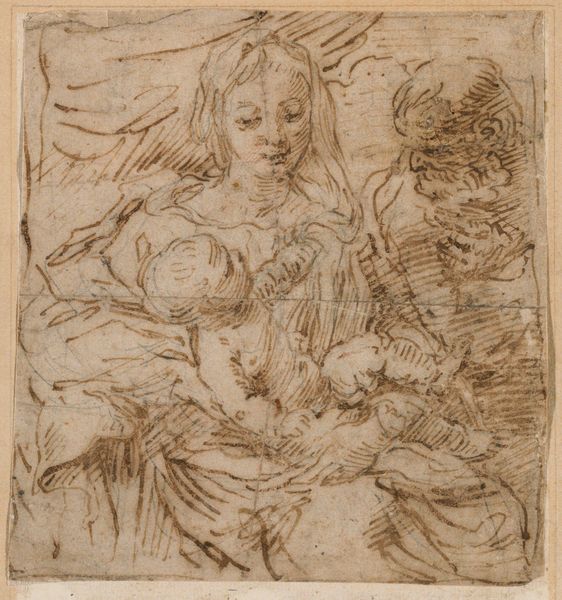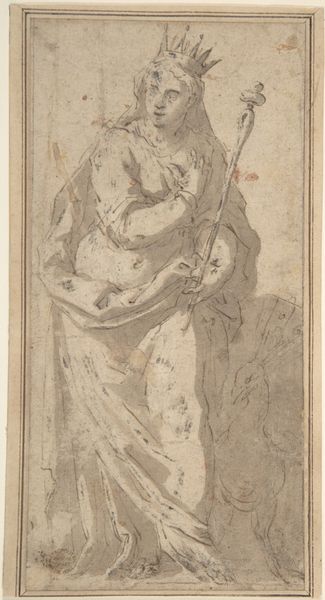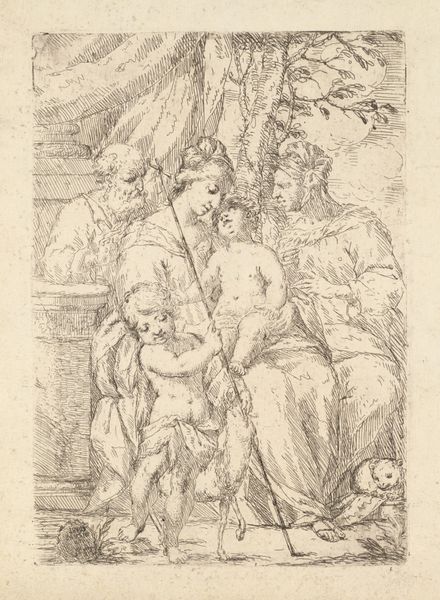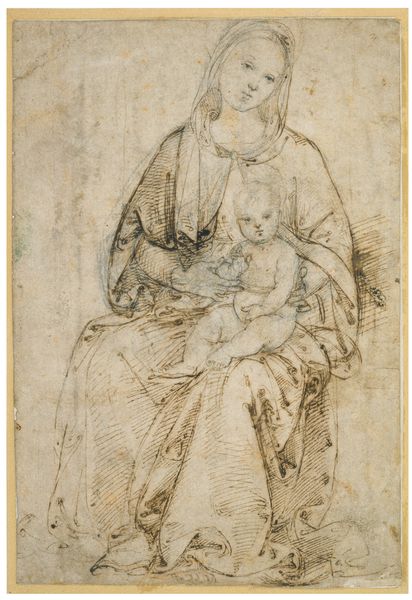
Standing Virgin with Child, Two Heads at Upper Right (recto); Sketch of Steps (verso) 1525 - 1535
0:00
0:00
drawing, print, ink, pencil
#
drawing
#
ink painting
# print
#
figuration
#
ink
#
pencil drawing
#
pencil
Dimensions: 4 13/16 x 3 1/8in. (12.3 x 8cm)
Copyright: Public Domain
Curator: At the Metropolitan Museum of Art, we find this ink and pencil drawing from Battista Franco dating back to around 1525 to 1535. The recto depicts the Virgin and Child, along with two additional heads at the upper right. Editor: It’s the initial sketchiness of the composition that strikes me first. The Virgin’s face is serene, while the additional figures appear spectral, adding an eerie depth. You can almost see the labor in creating this artwork, which has not been finalized in the final stages of execution. Curator: That’s an astute observation. Battista Franco was indeed heavily influenced by the masters like Michelangelo and Raphael, whose work enjoyed massive market and institutional success in those years, and he disseminated those artist's styles through prints such as the sort we are currently examining, impacting artistic styles on a broader scale, for a greater number of patrons to consume. This sheet displays how those historical titans would also produce these looser types of preparatory studies. Editor: Focusing on the labor of the art itself, what are the economics around artistic preparation? Sketches and drawings like this show the artistic process and also hint at workshop practices. The materials—paper, ink, pencils—and the artisan's time, represent very concrete factors of production. They force us to consider: How would a drawing like this be valued, distributed, or owned? Curator: It’s important to note, as well, that such preparatory works weren't necessarily intended for public view but the nature of drawings and prints permitted greater circulation than say a mural locked away on a distant church ceiling. So even a drawing or print of something from an older era might revitalize a concept as if anew. This print makes clear to its patron how this iconography could be revisited, reworked, bought, sold, and adapted for contemporary culture. Editor: I agree, this work invites considering what makes the visual culture that we often categorize as ‘high art’ different from, for example, artisanal craft. Is the difference merely the context of its reception—its role in commerce, cultural reproduction, social messaging, display at the Met? Curator: Yes, absolutely. Works like this really make you think about art’s impact—its influence not just on other artists but also on social institutions. Editor: For me, too, this work sparks some interesting reflection around our preconceptions around material and labor as components of "art."
Comments
No comments
Be the first to comment and join the conversation on the ultimate creative platform.
